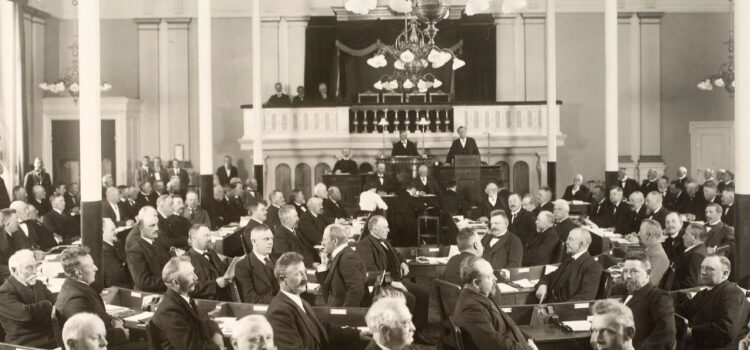

This article is an excerpt from the Shortform summary of "The Federalist Papers" by Alexander Hamilton. Shortform has the world's best summaries of books you should be reading.
Like this article? Sign up for a free trial here .
What is the Three-Fifths Compromise? How does Federalist 54 address this method of apportioning representatives in the House?
The Three-Fifths Compromise was a deal struck to partially count enslaved people in a state’s population. This provided an advantage to Southern states in determining the number of House members.
Read more about the Three-Fifths Compromise and Federalist 54.
Federalist 54 Background
A key question in drafting the Constitution was how large to make the House of Representatives. If the number of representatives was too small, it would be unrepresentative of the entire nation. But if it was too large, the body would be chaotic and dysfunctional; each representative would only represent small numbers of voters, making it too easy for factions to control members and dominate national politics.
The key, then, was to set the number of representatives (or, more specifically, the ratio of representatives to voters) at the right level. The Constitution called for a House of 65 members. While critics objected that this number was too small, the Constitution made it clear that this figure was to be temporary. It called for the House to be enlarged just three years after the first decennial census of 1790, as would happen every ten years thereafter.
Moreover, the ratio of representatives to voters was to be fixed at one for every 30,000. This, too, was based on sound practice. The British Constitution, held in high regard by the Framers, had roughly the same apportionment for the House of Commons. In fact, the House of Representatives was an improvement on this model, as it contained no property or wealth qualifications for either representatives or voters (beyond what may have been required by the individual states).
Also, the ratio of apportionment for seats in the various state legislatures was sometimes very great (one representative for 40,000-50,000 voters) or very small (one representative for just a few hundred voters). In either case, the federal ratio of 30,000 was well in line with longstanding governing norms.
(Shortform note: The Reapportionment Act of 1929 changed this formula, fixing the total number of representatives at 435. As the national population grew, so did that of the average House district. Today, the average House district has over 700,000 constituents.)
What is the Three-Fifths Compromise?
We’ve already seen how each state’s number of House members was to be tied to its population, as determined by the decennial census. But this didn’t answer the question of enslaved people. How were they to be counted?
The slaveholding states (located primarily in the South) had insisted at the Constitutional Convention that enslaved people be counted as full persons for purposes of representation (which would have given the South an outsized influence in Congress), but not for purposes of direct taxation (which would reduce the federal tax burden to be borne by the slaveholding states). In other words, southerners wanted to treat slaves as people when it would benefit them, and as property when that would benefit them.
Eventually, the delegates reached the Three-Fifths Compromise, which is now notorious. what is the Three-Fifths Compromise? This stated that enslaved people were to count as three-fifths of a person for both federal representation and for direct taxation, which was part of the Three-Fifths Compromise.
(Shortform note: The Three-Fifths Compromise was a concession to the South that gave the region an influence over national politics out of all proportion to its numbers of free white voters. It enabled the slaveholding states to gain additional representatives in the House as well as votes in the Electoral College that they wouldn’t have otherwise had. The compromise was only repealed by the Fourteenth Amendment in 1868, which explicitly stated that representation was to be allotted based on “the whole number of persons in each State.”)

———End of Preview———
Like what you just read? Read the rest of the world's best summary of Alexander Hamilton's "The Federalist Papers" at Shortform .
Here's what you'll find in our full The Federalist Papers summary :
- The genius of the founding fathers in how they designed the United States Constitution
- Why it was critical for the United States to form a union rather than stay separated as colonies
- How Alexander Hamilton anticipated social issues that are still relevant today






